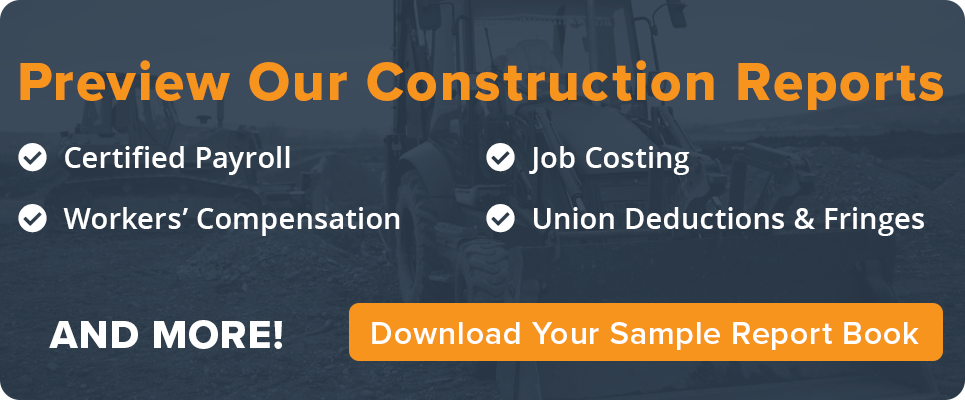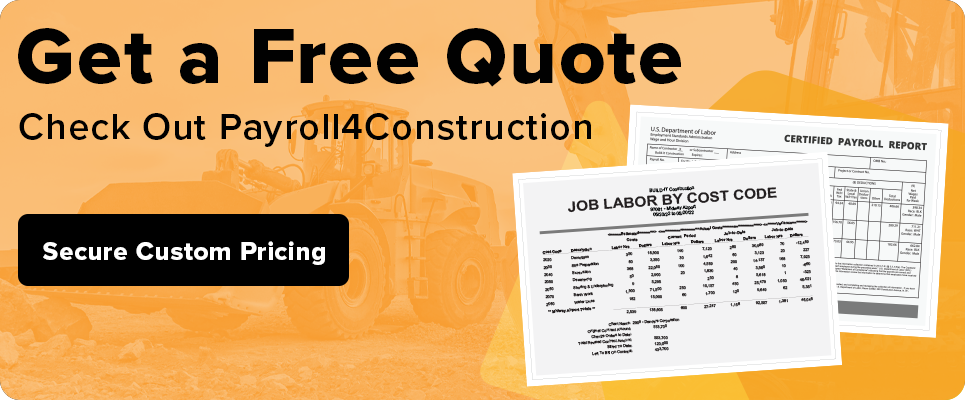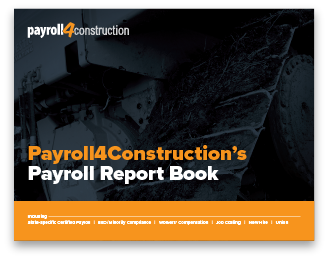
October 3, 2022
E-Filing Threshold Has Been Lowered
Starting in 2024, the IRS has altered which employers are allowed to file certain tax information returns in paper format.
In previous years, employers filing less than 250 forms, including but not combining 1095 Forms, W-2 Forms, and 1099 Forms, with the IRS were allowed to complete their filings in paper format.
In 2024, this number has been lowered to 10 combined forms. This means that employers filing 10 or more forms in total must electronically file all tax information forms.
Let’s say Bob’s Construction is filing four 1095 Forms and seven W-2 Forms. These two numbers must now be combined to determine the total aggregation of forms. In this example, Bob’s Construction will be submitting 11 total forms, meaning he will have to file all the forms (regardless of the fact that they aren’t all the same) electronically.
Alternatively, if Bob’s Construction is only filing four 1095 Forms and five W-4 Forms, his total form count would be at nine, meaning he wouldn’t have to file any of the forms electronically.
These rules will apply when submitting information in 2024 for the 2023 tax year.
For those affected, it is important to note that the IRS may grant a waiver from these new e-filing threshold rules if employers can demonstrate undue hardship, generally determined if the cost of e-filing significantly exceeds the cost of paper filing.
The Affordable Care Act In Construction
On March 23, 2010, the Affordable Care Act was signed into law by President Barack Obama. The purpose of the Act was to reform the United States health care system, with some of the principal goals including:
- Increase the number of insured Americans by making affordable health insurance more widely available
- Expand the Medicare program while adjusting Medicaid and the employer market
- Create more accessible medical care delivery methods
Flash forward more than 12 years later, the ACA remains the most significant regulatory overhaul of insurance coverage in the past 50 years — and it’s only gotten more extensive. Time has brought a wave of new government representatives who offer differing opinions on healthcare management — leading to quite a few federal provisions added under the umbrella of Affordable Care Act regulations.
With such a substantial, evolving law to abide by, it can be challenging for construction companies to determine where exactly they fall within the reporting requirements. While the ACA, as a whole, affects all sectors of business, not every mandate influences the construction industry. In this article, we’ll break down the portions of ACA reporting that directly impact contractors, so you’ll have a better understanding of what’s expected.
How the Affordable Care Act Impacts Construction
The level of impact ACA regulations have on a construction company depends on the size of a company’s workforce. Small employers — those with fewer than 50 employees — may be eligible for tax credits and other benefits, but they remain otherwise untouched by ACA requirements. On the other hand, large employers — those with 50 employees or more — are required to offer health insurance to their full-time employees and provide evidential reports to the IRS.
Under the “Shared Responsibility” provision, Applicable Large Employers (companies with 50 or more employees) — or ALEs — are required to offer healthcare coverage to at least 95% of their employees and their children. The insurance has to be both affordable — costing less than 9.61% of the employee’s household income — and (at least) of minimum value — meaning the company covers no less than 60% of the cost of benefits incurred in the plan. Employees and their children may opt out of the insurance at no penalty to the employer — the 95% rule is measured on how many workers are offered health care coverage, not how many actually enroll in the employer plan.
The ACA also mandates — under the Employer Information Reporting regulation — ALEs to report their offers of healthcare coverage to both the employee and the IRS. These reports prove that the employee was given an opportunity for insurance and note whether the employee opted in or out.
How to Determine Applicable Large Employee Status
There are penalties for companies who fail to recognize their status as an ALE, so it’s important for contractors to know their company’s employer classification. A company is considered a reigning ALE if it had a minimum of 50 full-time employees during each month of the last calendar year. The variable of this ACA requisite is that the 50+ employees can be determined a few ways:
- A company has at least 50 full-time or full-time equivalent employees
- ACA considers a full-time employee as someone who works at least 30 hours per week or 130 hours per month.
- A full-time equivalent employee (FTE) is actually a group of employees who work less than 130 hours during a calendar month but are aggregated into a full-time equivalent count
- Employees with medical coverage through the military do not have to be counted toward the 50-employee threshold
- An employer may not be an ALE if the seasonal worker exception applies
Small employers may also be considered ALE if they’re part of an Aggregated ALE group. These groups are small companies that share a common owner or are related under certain IRS rules. Their workforce numbers are aggregated, so they’re treated as one employer. Even if each individual company has fewer than 50 full-time employees, when combined, the group as a single entity meets ALE status. However, once ALE status is determined, each of these small companies is considered an ALE member and has to file their own reports separately.
ALE status is determined by the previous year’s labor report, so even if a company no longer meets the requirements in the current year, it still has to remain an ALE until the following year if it met the ALE conditions the year prior.
As an example:
- In 2022, Company A has 57 full-time employees, giving them ALE status in 2023
- In 2023, Company A has 46 full-time employees, rescinding their ALE status in 2024, but they remain an ALE for the remainder of 2023 because of their labor report in 2022
ALE status can vary from year to year as companies shrink and expand their workforce. To avoid fines, checking ALE status annually is critical for companies undergoing any type of employment shift.
The Affordable Care Act Reporting Process
Once a company has established its status as an Applicable Large Employer, they’re required to file two reports as evidence that health insurance was offered or not offered to each full-time employee. One of these reports goes to the employees, and both reports go to the IRS. These reports are:
- 1094-C — Reported to the IRS and serves as a cover sheet summary for the 1095-C
- 1095-C — Reported to both the IRS and the employee detailing the employer’s offer of health insurance coverage
An ALE member must file a 1095-C with the IRS for each of its full-time employees, regardless of whether the ALE made an offer of insurance or not or if the employee opted out. In the 1095-C, there will be space to indicate the following:
- Whether an employee was offered coverage or not
- Why they were not offered coverage (if applicable)
- What type of coverage the employee was offered (spousal, dependent, self)
- How much the employee would pay for self-coverage only
- The annual term length of the policy
- Whether the employee selected the insurance plan
These forms are found on the IRS website and can be filled out manually before being sent back to the tax agency. There is one due date each year for 1095-C submittals, but it varies, so checking the IRS website at the beginning of the first quarter of the current year will help contractors lock in when they need to have everything completed.
Contractors can make the process easier on themselves by having robust construction accounting software that can figure out a company’s ALE status, then print out, fill out, and send all 1095-Cs to both the IRS and the employees.
Failing To Comply with ACA Regulations
There are a variety of penalties that can occur if an ALE isn’t compliant with ACA regulations. They are categorized into two different levels:
Minor Penalties: A company may be subject to a $3,000 annual fine per employee if:
- The offered coverage is of minimum value but not affordable to full-time employees
- Any of the employees not offered affordable coverage qualifies for a premium tax credit or cost-sharing assistance and
- The employees referenced in #2 purchase coverage from a public insurance exchange
Major Penalties: A company may be subject to a $2,000 annual penalty for every full-time employee (minus the first 30 employees) if:
- Company fails to offer coverage of minimum value
- Company doesn’t meet the 95% rule
- At least one employee qualifies for a premium tax credit or cost-sharing assistance
- At least one employee purchases coverage from the public insurance exchange
The 95% rule is there as a safeguard to give employers some wiggle room in case there is a minor filing error. But taking the necessary steps to identify all workers considered to be full-time is essential to avoiding costly penalties.
Conclusion
Two of the most important things you can do to stay up to date with ACA regulations are to: pay attention and ask questions. The 50-employee determinant for whether a construction company is an ALE or not is a fairly straightforward marker. But keep in mind that ACA considers full-time to be 30 hours as opposed to the traditional 40, and companies can still be an ALE if enough workers are full-time equivalents. A few strategies to consider while managing ACA regulations are:
- Take the time to talk to specialists if you’re unsure if your company meets the criteria or if you’re confused about how an employee should be categorized
- Do an annual check of your ALE status at the beginning of each year, especially if you experienced a shift in your workforce numbers
- If you’re confident in your ALE status, establish a system that allows you to track every 1095-C given to an employee so you know that each worker received a copy
- Consider using accounting software that will not only keep up to date with ACA requirements but also do the filing for you
By making it a habit to stay on top of how many employees you have and how many hours they work, you can use that information to determine who all needs to be offered health insurance — making ACA reporting a smooth routine instead of a complicated rut.
Share Article
Keep on current news in the construction industry. Subscribe to free eNews!



